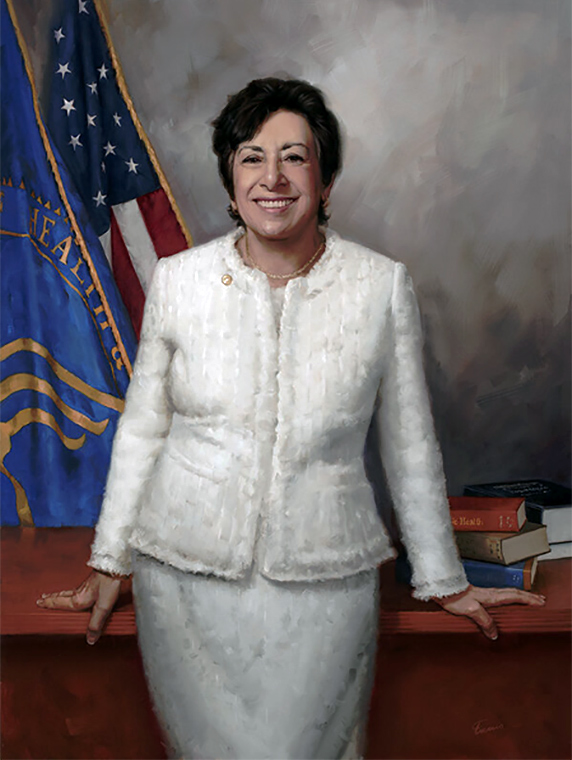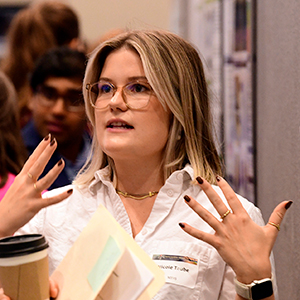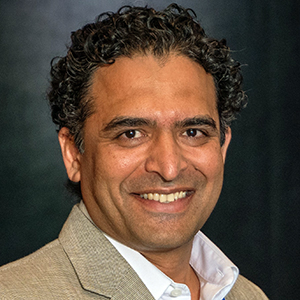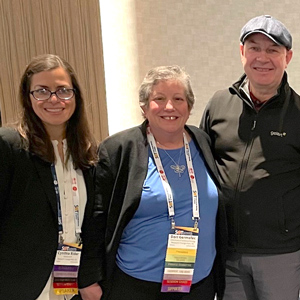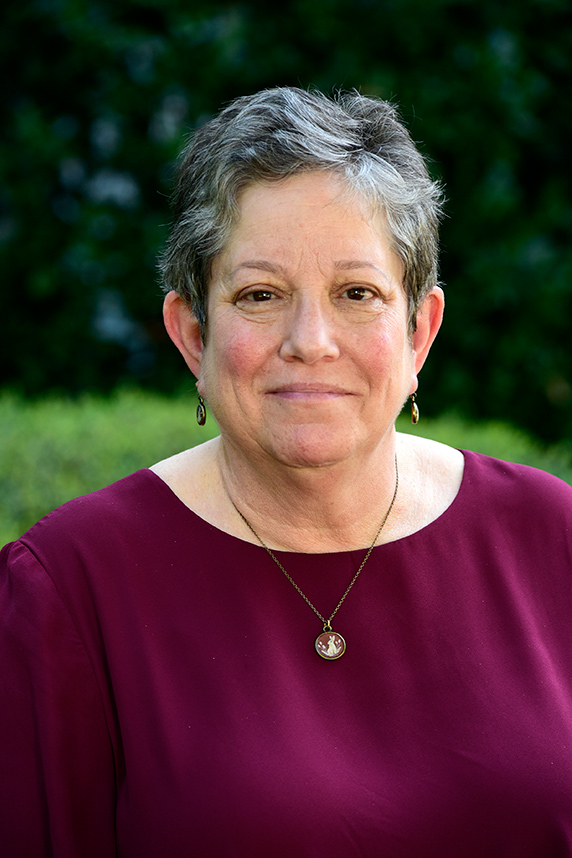 Germolec, who joined NIEHS in 1985, specializes in the effects of chemicals on the immune system. (Photo courtesy of Steve McCaw / NIEHS)
Germolec, who joined NIEHS in 1985, specializes in the effects of chemicals on the immune system. (Photo courtesy of Steve McCaw / NIEHS)Science communication strategies, microplastics pollution, cannabis use, and environmental health disparities were just a few of the topics that headlined the 60th annual meeting of the Society of Toxicology (SOT), held virtually March 12-26. NIEHS scientists, trainees, and grant recipients were well-represented at the event. They showcased their latest findings through seminars, poster sessions, workshops, and panel discussions.
A conference highlight was the tribute to former NIEHS and National Toxicology Program (NTP) Director Linda Birnbaum, Ph.D. (see sidebar).
Virtual networking
“This year’s meeting demonstrated the breadth of toxicological research conducted and supported by NIEHS,” said Dori Germolec, Ph.D., from the institute’s Division of the NTP (DNTP). As the new vice president-elect of SOT, she will become president in two years.
“Although we always prefer to meet in person, there were advantages to the online format in that we could view more sessions,” noted Germolec. “Attendees had many opportunities to network and catch up with their colleagues in virtual conference rooms, mixers, and group meetings.”
Exposome, biological diversity
One such networking opportunity involved a meet-and-greet with Rick Woychik, Ph.D., director of NIEHS and NTP. He described his leadership values, highlighted the institute’s 2018-2023 Strategic Plan, and fielded questions from participants. Woychik drew attention to research challenges that deserve greater attention, including:
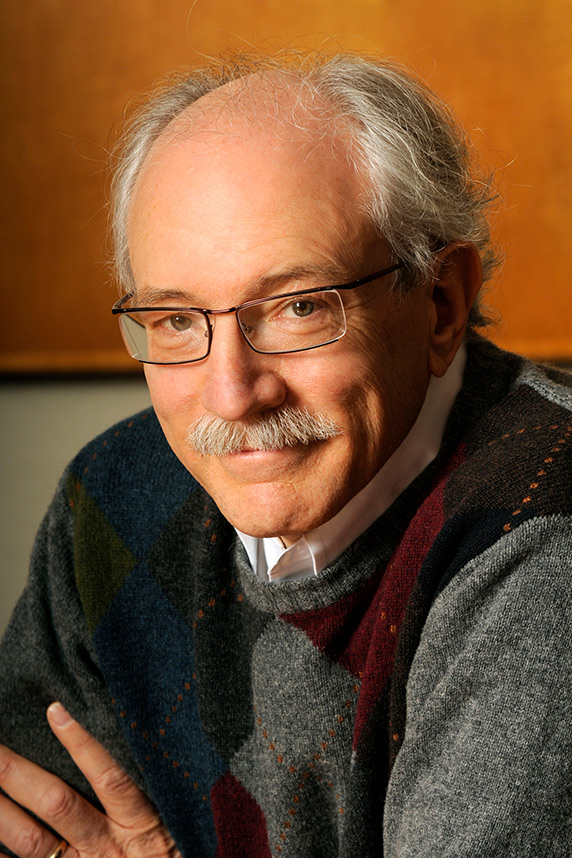 “We need to focus on proactive and thoughtful two-way communication, where we learn to listen as well as we express our own ideas,” said Woychik. (Photo courtesy of Steve McCaw / NIEHS)
“We need to focus on proactive and thoughtful two-way communication, where we learn to listen as well as we express our own ideas,” said Woychik. (Photo courtesy of Steve McCaw / NIEHS)- The exposome, which is the totality of exposures — whether chemical or psychosocial — that an individual experiences throughout life. “We are all subjected, on a daily basis, to a complex cocktail of environmental agents,” he explained. “If we truly want to understand the impact of the environment, we need to take a more holistic approach.”
- Individuals vary in response to exposures because of each person’s unique biology. “We have to move beyond studying the environment using a single cell line or single strain of mice, rats, or other model organism,” Woychik said. “I challenge all of you to develop experimental strategies that address how individuals respond differently to environmental exposures based on their own genetic, epigenetic, and biological makeup.”
Communication insights from improv
Woychik suggested that to achieve their goals, toxicologists need to develop better communication skills — a recommendation underscored by Laura Lindenfeld, Ph.D. She is dean of the journalism school at Stony Brook University and executive director of the Alan Alda Center for Communicating Science. Lindenfeld’s presentation focused on how researchers can use insights from improvisational theater to foster empathy and build trust with colleagues and the public.
Alda himself spoke briefly. “Toxicology has such a direct effect on people’s lives [and] even the life of the planet,” he said. “As rigorous as your work at the bench is, it doesn’t stop until it engages people who may not realize that their lives could be saved by what you have learned.”
From marijuana to microplastics
 Among her other responsibilities, Ryan helps design and coordinate studies on environmental agents’ toxicity and carcinogenicity. (Photo courtesy of Steve McCaw / NIEHS)
Among her other responsibilities, Ryan helps design and coordinate studies on environmental agents’ toxicity and carcinogenicity. (Photo courtesy of Steve McCaw / NIEHS)DNTP Toxicologist Kristen Ryan, Ph.D., chaired an event on the effects of marijuana use by pregnant women.
“One emerging area of concern identified from epidemiological and preclinical research highlights a variety of neurological impairments in children associated with parental cannabis use,” she said.
The sampling below hints at the range of topics other researchers shared with the international audience from academia, industry, and government.
- Deborah Cory-Slechta, Ph.D., NIEHS grantee at the University of Rochester Medical Center, delivered the SOT Distinguished Toxicology Scholar Award Lecture: “Air Pollution as a Risk Factor for Neurodevelopmental Disorders and Neurodegenerative Diseases.”
- Chandra Jackson, Ph.D., from the NIEHS Epidemiology Branch, presented her research in the workshop, “The Community Exposome: Effects of Environmental Contamination on Health Disparities and Marginalized Populations Through the Lens of a Toxicologist.”
- Nigel Walker, Ph.D., from DNTP, chaired “Tackling the Potential Human Health Impacts of Microplastics and Nanoplastics: Challenges for Toxicologists in the Assessment of Real-World Complex Mixtures.”
NIEHS scientists, trainees, and grantees who received SOT awards were highlighted in the March Environmental Factor.
(Jesse Saffron, J.D., is a media relations coordinator in the NIEHS Office of Communications and Public Liaison.)





